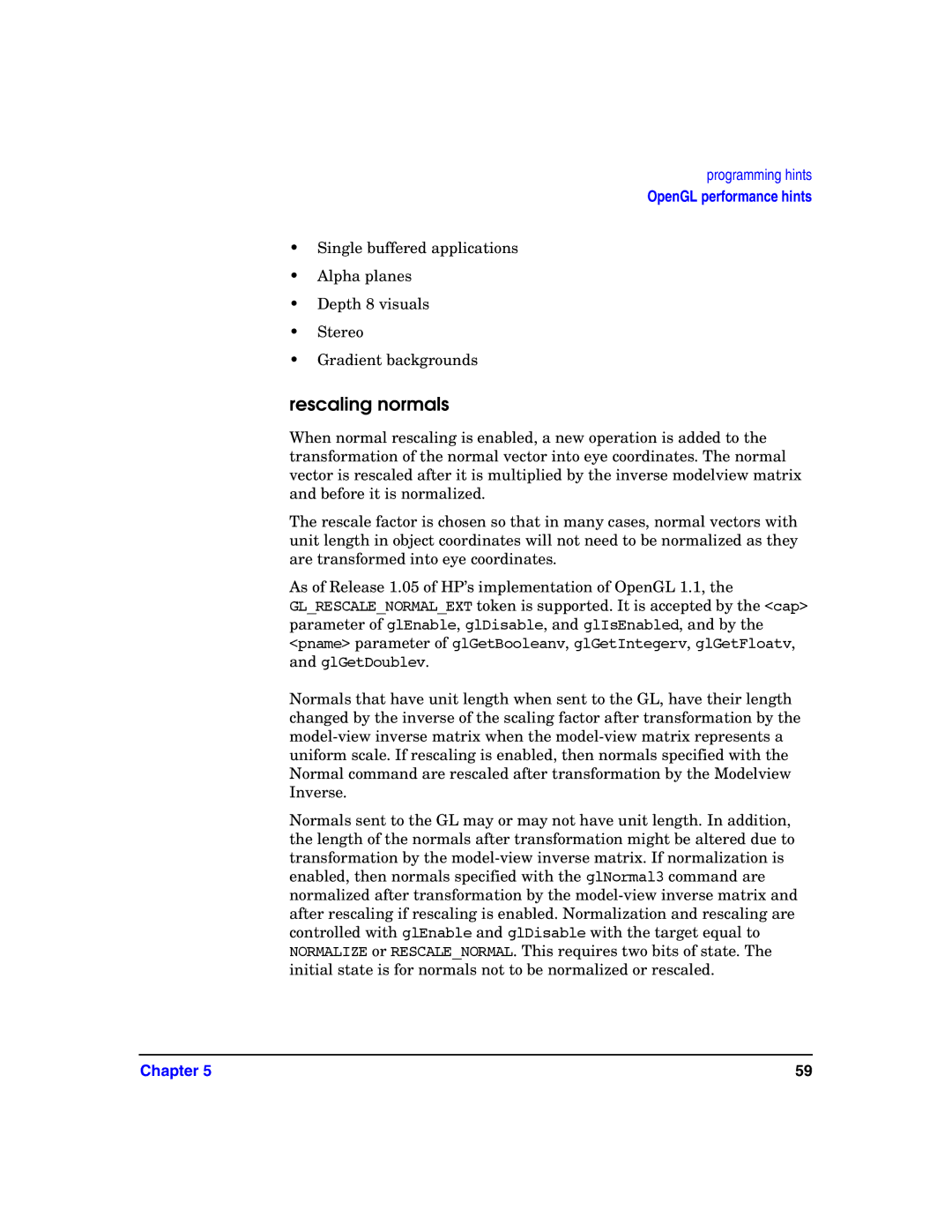programming hints
OpenGL performance hints
•Single buffered applications
•Alpha planes
•Depth 8 visuals
•Stereo
•Gradient backgrounds
rescaling normals
When normal rescaling is enabled, a new operation is added to the transformation of the normal vector into eye coordinates. The normal vector is rescaled after it is multiplied by the inverse modelview matrix and before it is normalized.
The rescale factor is chosen so that in many cases, normal vectors with unit length in object coordinates will not need to be normalized as they are transformed into eye coordinates.
As of Release 1.05 of HP’s implementation of OpenGL 1.1, the
GL_RESCALE_NORMAL_EXT token is supported. It is accepted by the <cap> parameter of glEnable, glDisable, and glIsEnabled, and by the <pname> parameter of glGetBooleanv, glGetIntegerv, glGetFloatv, and glGetDoublev.
Normals that have unit length when sent to the GL, have their length changed by the inverse of the scaling factor after transformation by the
Normals sent to the GL may or may not have unit length. In addition, the length of the normals after transformation might be altered due to transformation by the
Chapter 5 | 59 |
